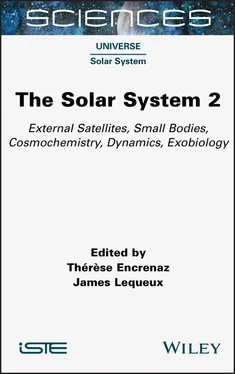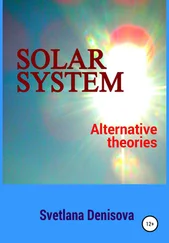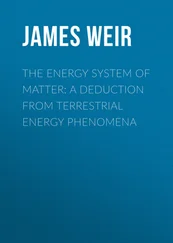5 Preface
6 Begin Reading
7 Appendix
8 Glossary
9 List of Authors
10 Index
11 End User License Agreement
1 v
2 iii
3 iv
4 xi
5 xii
6 1
7 2
8 3
9 4
10 5
11 6
12 7
13 8
14 9
15 10
16 11
17 12
18 13
19 14
20 15
21 16
22 17
23 19
24 18
25 20
26 21
27 22
28 23
29 24
30 25
31 26
32 27
33 28
34 29
35 30
36 31
37 32
38 33
39 34
40 35
41 36
42 37
43 38
44 39
45 40
46 41
47 42
48 43
49 44
50 45
51 46
52 47
53 48
54 49
55 50
56 51
57 52
58 53
59 54
60 55
61 56
62 57
63 58
64 59
65 60
66 61
67 62
68 63
69 64
70 65
71 66
72 67
73 68
74 69
75 70
76 71
77 72
78 73
79 74
80 75
81 76
82 77
83 78
84 79
85 80
86 81
87 82
88 83
89 84
90 85
91 86
92 87
93 88
94 89
95 90
96 91
97 92
98 93
99 94
100 95
101 96
102 97
103 98
104 99
105 100
106 101
107 102
108 103
109 104
110 105
111 106
112 107
113 108
114 109
115 110
116 111
117 112
118 113
119 114
120 115
121 116
122 117
123 118
124 119
125 120
126 121
127 122
128 123
129 124
130 125
131 126
132 127
133 128
134 129
135 130
136 131
137 132
138 133
139 134
140 135
141 136
142 137
143 138
144 139
145 140
146 141
147 142
148 143
149 144
150 145
151 146
152 147
153 148
154 149
155 150
156 151
157 152
158 153
159 154
160 155
161 156
162 157
163 158
164 159
165 160
166 161
167 162
168 163
169 164
170 165
171 166
172 167
173 168
174 169
175 170
176 171
177 172
178 173
179 174
180 175
181 176
182 177
183 178
184 179
185 180
186 181
187 182
188 183
189 184
190 185
191 186
192 187
193 188
194 189
195 190
196 191
197 192
198 193
199 194
200 195
201 196
202 197
203 198
204 199
205 200
206 201
207 202
208 203
209 204
210 205
211 206
212 207
213 208
214 209
215 210
216 211
217 212
218 213
219 214
220 215
221 216
222 217
223 218
224 219
225 220
226 221
227 222
228 223
229 224
230 225
231 226
232 227
233 228
234 229
235 230
236 231
237 232
238 233
239 234
240 235
241 236
242 237
243 238
244 239
245 240
246 241
247 242
248 243
249 244
250 245
251 246
252 247
253 248
254 249
255 250
256 251
257 252
258 253
259 254
260 255
261 256
262 257
263 258
264 259
265 260
266 261
267 262
268 263
269 264
270 265
271 266
272 267
273 268
274 269
275 270
276 271
277 272
278 273
279 274
280 275
281 276
282 277
283 278
284 279
285 280
286 281
287 282
288 283
289 284
290 285
291 286
292 287
293 288
294 289
295 290
296 291
297 292
298 293
299 294
300 295
301 296
302 297
303 298
304 299
305 300
306 301
307 302
308 303
309 304
310 305
311 306
312 307
313 308
314 309
315 310
316 311
317 312
318 313
319 314
320 315
321 316
322 317
323 318
324 319
325 320
326 321
327 322
328 323
329 324
330 325
331 326
332 327
333 328
334 329
335 330
336 331
337 332
338 333
339 334
340 335
341 336
342 337
343 338
344 339
345 340
346 341
347 342
348 343
349 344
350 345
351 346
352 347
353 348
SCIENCES
Universe , Field Director – Fabienne Casoli
Solar System , Subject Head – Thérèse Encrenaz
The Solar System 2
External Satellites, Small Bodies, Cosmochemistry, Dynamics, Exobiology
Coordinated by
Thérèse Encrenaz
James Lequeux

First published 2021 in Great Britain and the United States by ISTE Ltd and John Wiley & Sons, Inc.
Apart from any fair dealing for the purposes of research or private study, or criticism or review, as permitted under the Copyright, Designs and Patents Act 1988, this publication may only be reproduced, stored or transmitted, in any form or by any means, with the prior permission in writing of the publishers, or in the case of reprographic reproduction in accordance with the terms and licenses issued by the CLA. Enquiries concerning reproduction outside these terms should be sent to the publishers at the undermentioned address:
ISTE Ltd
27-37 St George’s Road
London SW19 4EU
UK
www.iste.co.uk
John Wiley & Sons, Inc.
111 River Street
Hoboken, NJ 07030
USA
www.wiley.com
© ISTE Ltd 2021
The rights of Thérèse Encrenaz and James Lequeux to be identified as the authors of this work have been asserted by them in accordance with the Copyright, Designs and Patents Act 1988.
Library of Congress Control Number: 2021940272
British Library Cataloguing-in-Publication Data
A CIP record for this book is available from the British Library
ISBN 978-1-78945-034-7
ERC code:
PE9 Universe Sciences
PE9_1 Solar and interplanetary physics
PE9_4 Formation of stars and planets
Thérèse ENCRENAZ1 and James LEQUEUX2
1 LESIA, Paris Observatory, PSL University, Paris, France
2 LERMA, Paris Observatory, PSL University, Paris, France
The aim of this book is to present a global and synthetic vision of planetology to the reader, in other words, the study of the objects of the Solar System. This is an ambitious objective, because planetology has undergone considerable development over the last decades and, today, it presents interfaces with multiple disciplines. In our approach, we have chosen to prioritize the study of physico-chemical processes, in order to shed light on the mechanisms that are at the origin of the formation of the objects of the Solar System, or that are responsible for their evolution.
This work is a continuation of the book Le Système solaire (T. Encrenaz, J.-P. Bibring, M. Blanc, M.-A. Barucci, F. Roques, P. Zarka), published in 2003 by EDP-Sciences and CNRS Editions, in the “Savoirs Actuels” collection. This work was itself the third edition of Le Système solaire (T. Encrenaz, J.-P. Bibring, M. Blanc), first published in 1987 in co-edition with InterEditions and CNRS Editions. More than 30 years after this first edition, a complete revision of the work was essential: during this period, planetology has undergone several revolutions. The first ones, both realized thanks to ground-based telescopes, were the discovery of the first trans-Neptunian objects other than Pluto in 1992, and then, in 1995, the discovery of the first extrasolar planets around solar-type stars. The 1990, 2000 and 2010 decades saw the deep exploration of the planets Jupiter and Saturn and their system, with the Galileo and Cassini space missions. The beginning of the 21st century saw the resumption of the Mars exploration program with the launch of numerous probes, both in orbit and on the surface of the planet. Venus and Mercury were also visited by space probes, as well as several asteroids including Ceres and Vesta; lastly, the comet Churyumov-Gerasimenko was the subject of extended exploration thanks to the spectacular European Rosetta mission. Meanwhile, the first detections of exoplanets paved the way to a new field of research in full development, that of exoplanetology. The extraordinary variety of objects discovered around other stars, both in terms of their orbits and their physical parameters, has raised new questions about the formation scenarios of planetary systems; the discovery of the phenomenon of migration in these systems has encouraged new research on the origin and evolution of our own Solar System. The discovery of a large proportion of rocky exoplanets – the “super-Earths” – has also stimulated work in exobiology with the ultimate goal of finding life on one of these exoplanets. Over the last 30 years, planetary scientists have forged increasingly close links with other astronomers (who are at the origin of the discovery of exoplanets), but also with geophysicists, chemists and biologists interested in the problem of the emergence of life, on Earth or elsewhere.
Читать дальше













